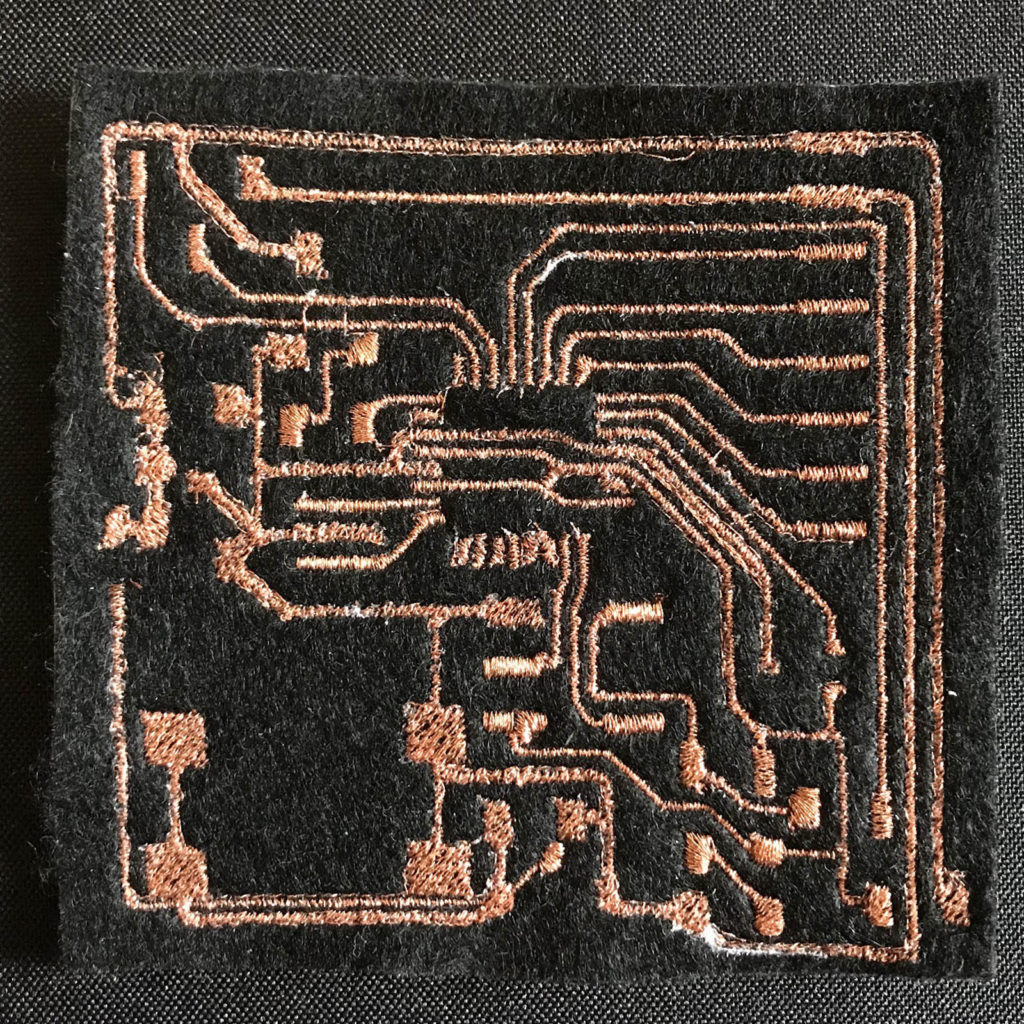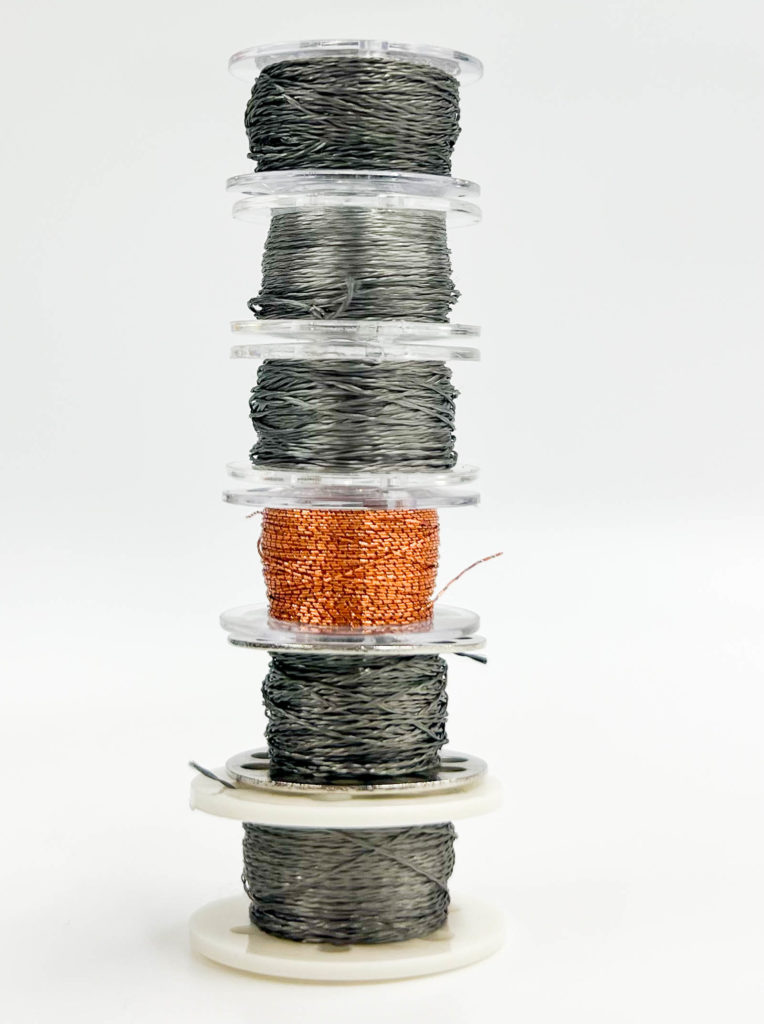
The innovation driving wearables and mass adoption is undeniable. According to Gartner Research, spending on wearable devices grew to $81 billion last year, up 18 percent from 2020. Pew Research reported one out of five Americans used some form of wearable technology regularly in 2020.
This trend is inevitable, and eventually, we will all be wearing or using some form of wearable technology to personalize our health. What’s more incredible is that what is accepted as “wearables” really isn’t wearable. Rather, consumers have been left to strap, wrap, or attach a pod device to their wrist or body.
This is where the opportunity presents itself for the textiles industry to lead and foster disruptive innovation by training people in sewing, as well as the textile engineers of tomorrow, to create new opportunities for a more connected future. But first, it is helpful to understand why the status quo around wearables exists today.

A brief history
Wearables and the semiconductor chips that power them have expanded dramatically from their originally intended purpose. Inertial measurement units (IMUs) were created in the 1940s to help large bodies such as ships, satellites and even rockets determine metrics such as direction, acceleration, and overall motion tracking.
It’s these same IMU devices that power the wearable market today. Thanks to Moore’s Law (which says that the number of transistors in a dense integrated circuit doubles about every two years), the semiconductor industry has been able to drastically increase the computational power of chips, while dramatically shrinking their physical size.
We now see this same technology in our phones and watches. Generally, all wearables employ some form of IMU for motion tracking. Due to Moore’s Law and increased accessibility of these chips, consumers have largely accepted the pod-based form factor in wearables as the status quo.

Textiles first, electronics second
As a student, I believed the convergence of biomaterials and electronics was inevitable, as I could literally see the adoption of wearables as a mainstream trend. Consumers are willing to adopt whatever product works if it is perceived as essential in our day-to-day lives.
Bulky, inflexible IMUs and chips have been wrapped in plastic so they could be worn on complex and dynamic geometries of the human body. But we can do better than to pound with existing “hammers” on plastics that look nothing like “nails.” We need a new tool to make seamless wearable devices, rather than continuing to rely on conventional hard materials.
We should instead be reinvesting our efforts in the research and materials to develop a new foundation for future wearables, improving form-factor, comfortability and accessibility of the technology first. This requires ideating from scratch and using inspiration from the materials that already cover 95 percent of the body: fabric.
Merging two disparate technologies—the new (semiconductors and their materials) and the old (sewing and textiles) can add value to the textiles ecosystem and help reshape the way we view wearable technology altogether, moving from the formula of chips and plastics to make wearables, to fabric engineering and fabric-based sensor technology. The industry will be rekindled as the new vehicle for wearable innovation merges electronic materials with sewing technology to usher in a new wearables 2.0.
Innovating from within
Our company has responded to a need for more material science development and sewing technology innovation in the wearable industry. A materials science company based in Brooklyn, New York, Nextiles Inc. merges flexible electronics and biomaterials with sewing technology. The end result is a hardware/software ecosystem that leverages fabric-based sensors in clothing.
New York is home to several institutions who are helping to advance the textiles industry. Organizations such as the Fashion Institute of Technology, Brooklyn Navy Yard, Material ConneXion, and the Council of Fashion Designers of America all continue to play an integral role in advancing innovations in manufacturing and sewing. All of these organizations also play a supporting role with Nextiles and the industry as a whole, as they continue to attract young, innovative entrepreneurs who can contribute to the broader textiles ecosystem.
The company’s technology relies on a needle and thread, and its fabrics can be sewn using the most basic sewing machines. In many ways, it is repurposing old parts of various industries to create new value, recreating sensors by mixing the best materials from the semiconductive world and the fabric world. The company’s fabrics and materials are then used to create new sensing architectures that are leveraged by several institutions and OEMs around the world.
Fostering young talent in the sewing industry is an important mission. Revitalizing the talent pool, inspiring new engineers to pursue sewing technology, and countering the historical opinion that sewing is an outsourced job for unskilled laborers advances this mission. Sewing and textile engineering is, in fact, an incredibly advanced field, and should be pushed for continued advancement, much like Moore’s Law was.
The company employs local sewers in New York and expects to continue to train the next generation of sewers by embracing new technologies that advance the industry. Together, with industry partners such as IFAI and others, we can focus our efforts on training more students in sewing and textile engineering. This would help improve job prospects for upcoming generations, help bring back manufacturing to the states, and even create new jobs by embracing all types of sewing technologies which the textiles industry can capitalize on.
Organizations, corporations, and academics alike are all responsible for the future of this industry and all contribute to this ecosystem. Like-minded partners can create a brighter textiles future.
George Sun is CEO of Nextiles Inc. He was trained as a bioengineer with an emphasis in electrical engineering and computer science at UC Berkeley and earned his Ph.D. in biological engineering with a focus on material science at MIT. www.nextiles.tech.
 TEXTILES.ORG
TEXTILES.ORG


